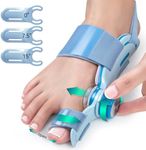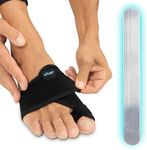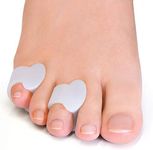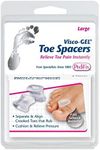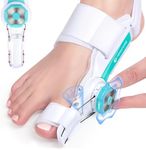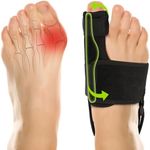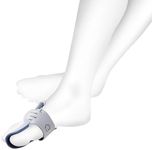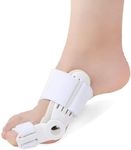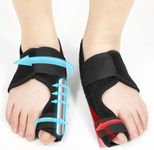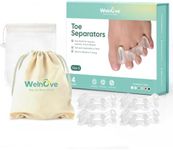Buying Guide for the Best Toe Straighteners
Choosing the right toe-straightener can make a big difference in your comfort and foot health, especially if you’re dealing with issues like overlapping toes, bunions, or hammertoes. The key is to find a product that fits your foot shape, addresses your specific toe problem, and feels comfortable enough for regular use. Before buying, think about when and how you plan to use the toe-straightener—whether it’s for daily wear, nighttime use, or during specific activities. Always consider your personal comfort and any advice from a healthcare professional.MaterialThe material of a toe-straightener affects both comfort and durability. Common materials include soft gel, silicone, foam, and fabric. Soft gel and silicone are flexible and gentle on the skin, making them good for sensitive feet or all-day wear. Foam and fabric options are often used for nighttime splints or for people who need a firmer hold. If you have sensitive skin or plan to wear the straightener for long periods, look for hypoallergenic and breathable materials. Your choice should depend on your comfort preferences and any skin sensitivities you may have.
Type (Sleeve, Separator, Splint, or Wrap)Toe-straighteners come in different types, such as sleeves, separators, splints, and wraps. Sleeves usually cover one or more toes and provide gentle alignment, making them suitable for mild issues or daily wear. Separators are placed between toes to prevent rubbing and are good for overlapping toes or corns. Splints and wraps offer more rigid support and are often used for more severe misalignments or nighttime correction. Choose a type based on the severity of your toe problem and when you plan to use it—gentle options for mild issues and firmer ones for more serious correction.
Size and AdjustabilityGetting the right size is crucial for effectiveness and comfort. Some toe-straighteners come in multiple sizes, while others are one-size-fits-most or adjustable. Adjustable designs use straps or Velcro to fit different foot shapes and sizes, which is helpful if your feet swell or if you want a custom fit. If you have particularly small or large feet, look for products with clear sizing information. Always measure your foot or toe as recommended by the manufacturer to ensure a good fit.
Ease of Use and CleaningA toe-straightener should be easy to put on and take off, especially if you plan to use it daily. Some designs slip on like a sock, while others require wrapping or fastening. Consider how much time and effort you want to spend each day. Cleaning is also important for hygiene—look for products that are washable and quick-drying, especially if you’ll wear them for long periods or during exercise. If you have limited mobility or dexterity, simpler designs may be better.
Intended Use (Daytime vs. Nighttime)Some toe-straighteners are designed for daytime use, allowing you to walk comfortably, while others are meant for nighttime wear and provide more rigid correction. Daytime options are usually softer and more flexible, so you can wear them in shoes. Nighttime straighteners are often bulkier and provide stronger support, which can help with more severe alignment issues. Think about when you need the most support and choose a product that fits your daily routine.

